12 November 2021
Monitoring animals – where they occur, how many there are and what species – provides essential information for evaluating and reporting the health of an ecosystem. Monitoring also plays a key role in directing management and assessing its success. To achieve this, a monitoring program needs to be accurate, adaptable and cost-effective.
A Northern Australia Hub project, led by researchers from the Northern Territory Department of Environment, Parks and Water Security (DEPWS), has evaluated and improved a long-term ecological monitoring program used to monitor animals in several national parks across the Top End, including Kakadu National Park.
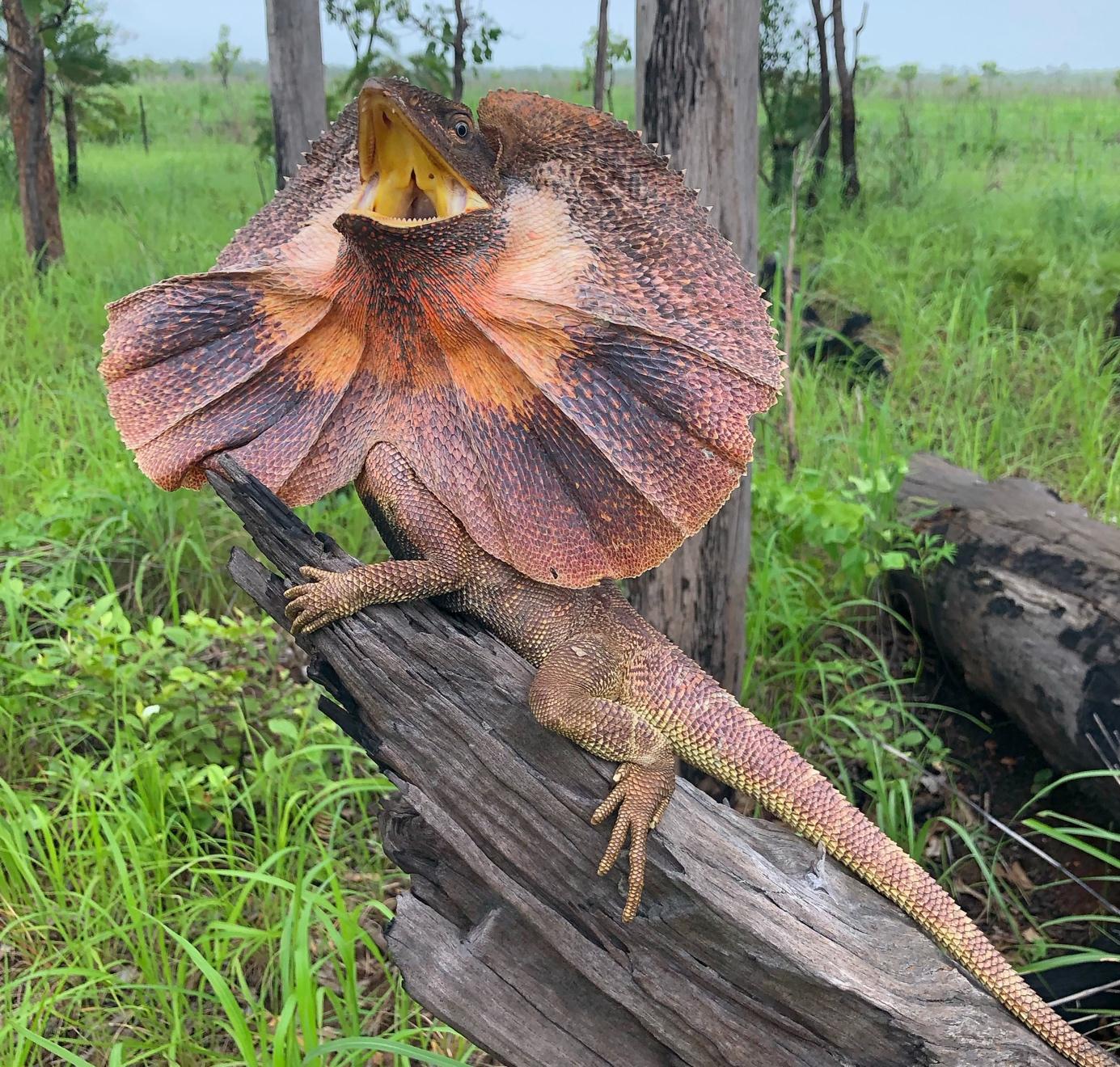
The frilled lizard suffered population declines with the arrival of cane toads in Kakadu, but they persist throughout lowland woodland habitats in the park. Photo: NT DEPWS.
The improved design means that surveys in Kakadu are done more intensively but less often and at fewer sites. Newer technology such as camera traps greatly improve the detection of many species.
To test the optimised monitoring design, DEPWS surveyed 49 of the 50 sites in Kakadu in 2019, using the new sampling protocol.
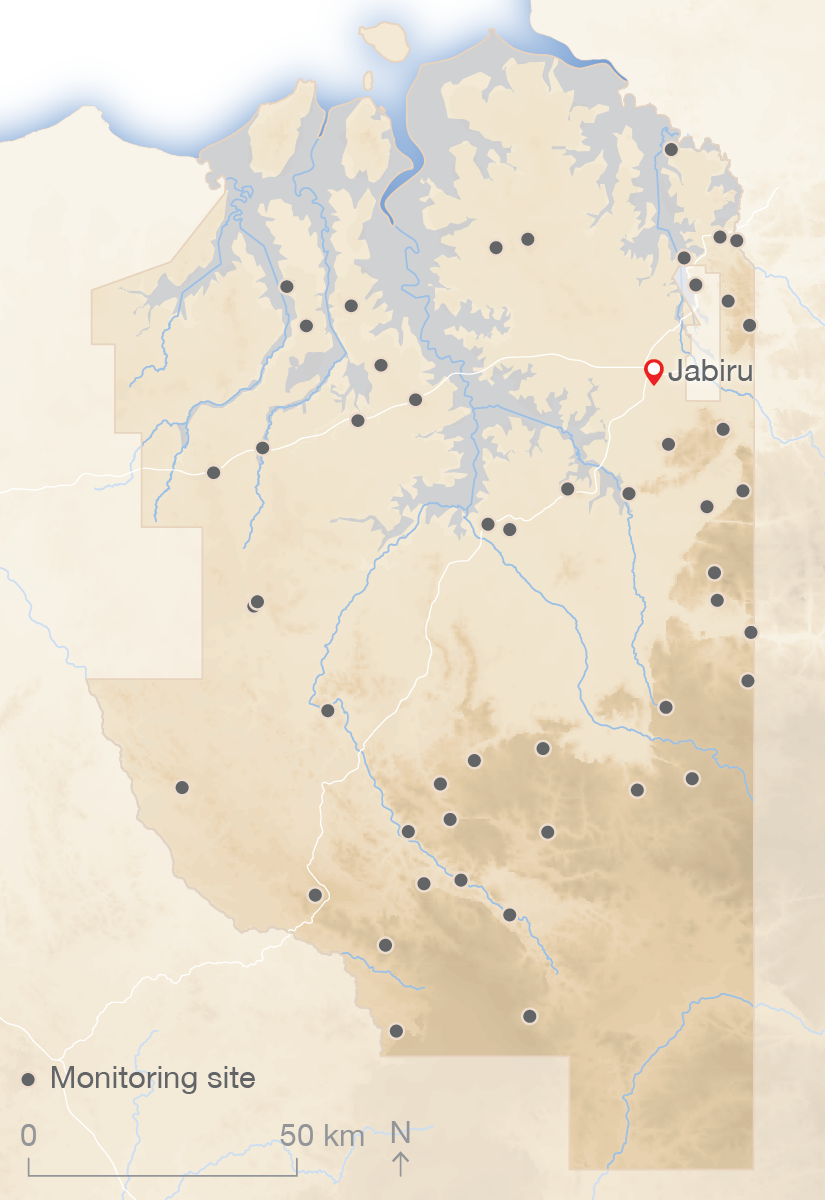
Locations of the 49 monitoring sites surveyed in Kakadu National Park in 2019.
Twelve threatened species (5 mammals, 4 reptiles and 3 birds) were detected, including the northern quoll and red goshawk. And for the first time, occurrences of feral cats, pigs and introduced herbivores such as buffalo were detected with enough sensitivity for effective monitoring.
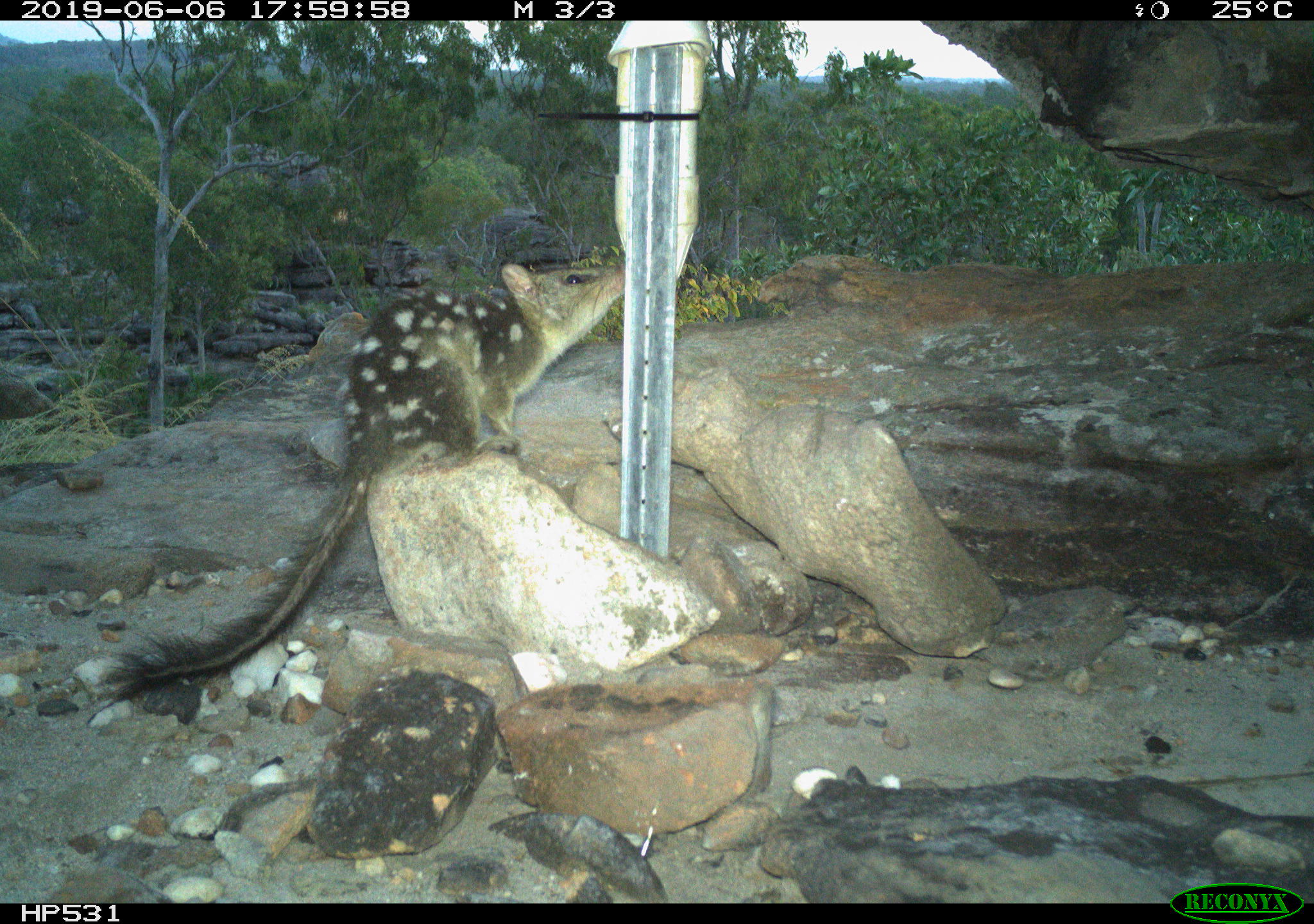
The northern quoll was recorded exclusively on camera traps at 7 sites during the trial. Photo: NT DEPWS.
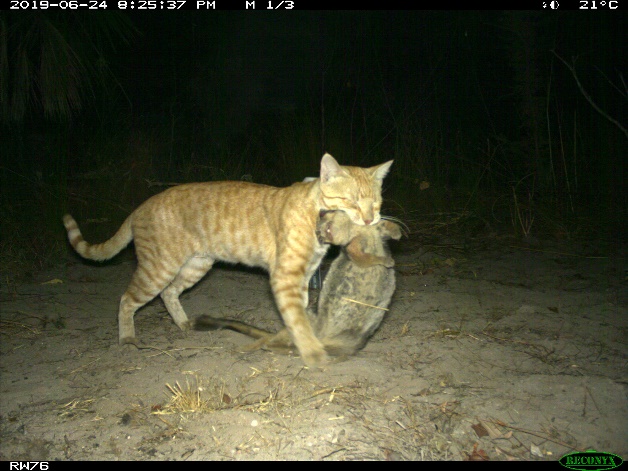
The implementation of multi-camera-trap array methods has demonstrated that feral cats are widespread throughout Kakadu National Park. Photo: DEPWS
Improvements made to the monitoring program include using camera traps and funnel traps, and more frequent sampling at fewer sites. These improvements increased the detectability of many species, and the sensitivity and power of monitoring data. This means we can better monitor a wider range of animal species.
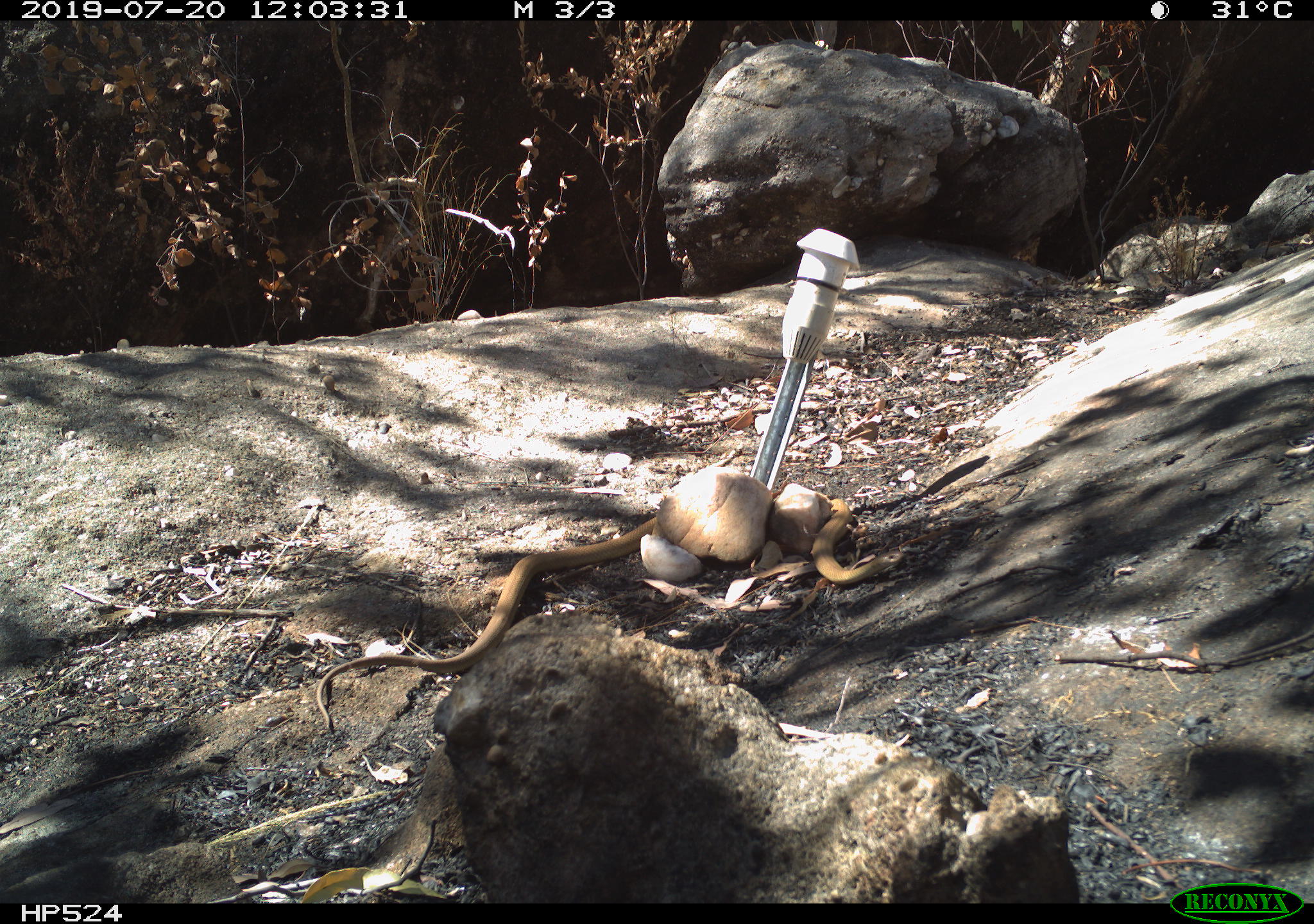
Camera trapping and funnels increased detections of numerous reptile species rarely, or never, encountered during previous monitoring, such as this Western pygmy mulga snake (Pseudechis weigeli). Photo: NT DEPWS.
The monitoring in Kakadu showed that small mammal communities have not yet recovered from the marked declines that occurred between 1995 and 2005. However, populations of small mammals are persisting in some parts of the park that are less frequently burnt.
The monitoring program is an invaluable long-term data set, and this revised monitoring program will continue to build on a long history of biodiversity monitoring in Kakadu.
The higher-quality data generated by this program can help to continue to refine and adapt management activities in Kakadu. It can assist in assessing the effectiveness of the park’s overall management plan, as well as management activities directed at specific threats to fauna from feral animals, weed invasion and altered fire regimes.
This ecological monitoring in Kakadu is a component of a wider integrated program in other national parks and protected areas across the Top End of the Northern Territory. Combining data collected from all these protected areas means this monitoring program can contribute to informing on-going management of other protected areas across the Top End beyond Kakadu.
Discover more findings on the project page or read the final report.
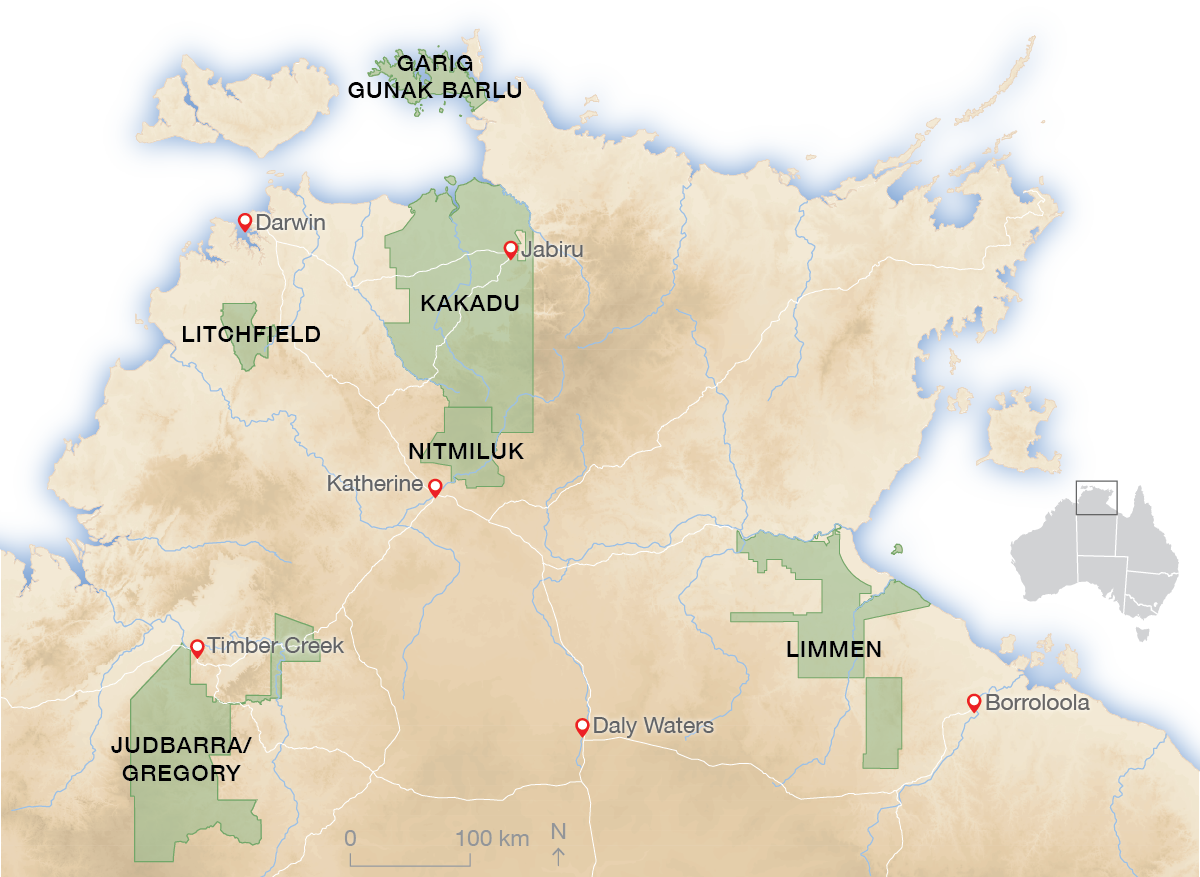
The monitoring program covers several national parks across the Top End.
Want to know more about the Resilient Landscapes Hub's activities and our research into practical solutions to environmental problems? Stay informed about activities, research, publications, events and more through the Hub newsletter.
"*" indicates required fields